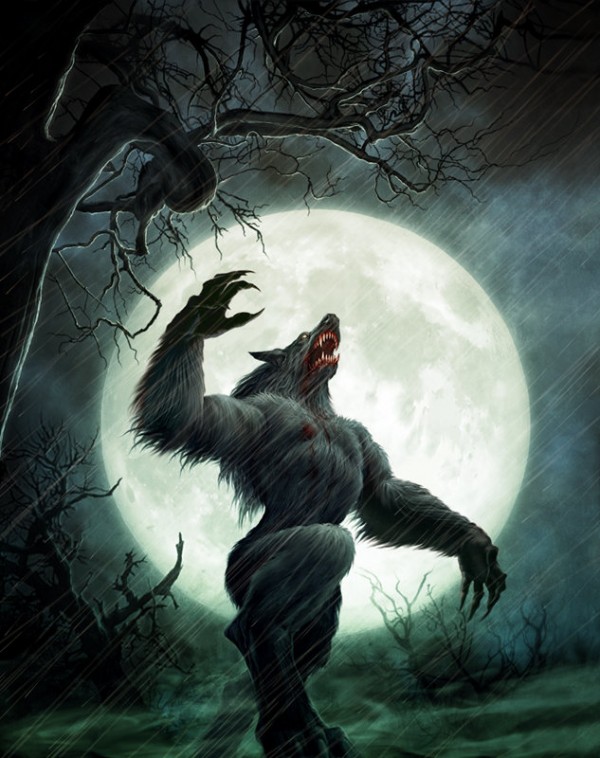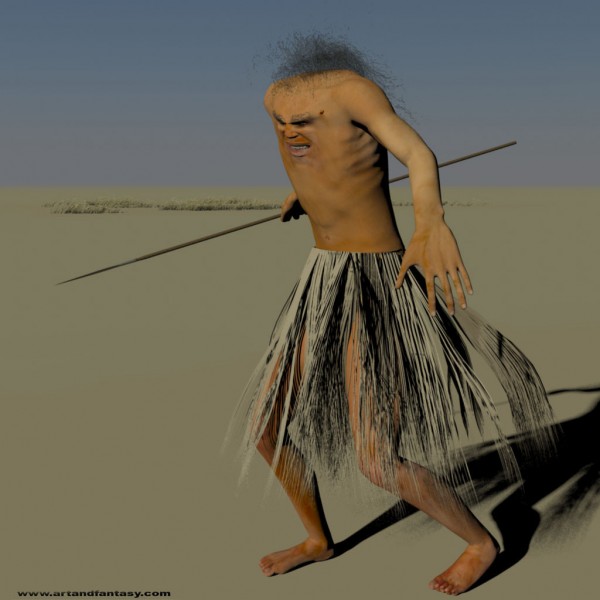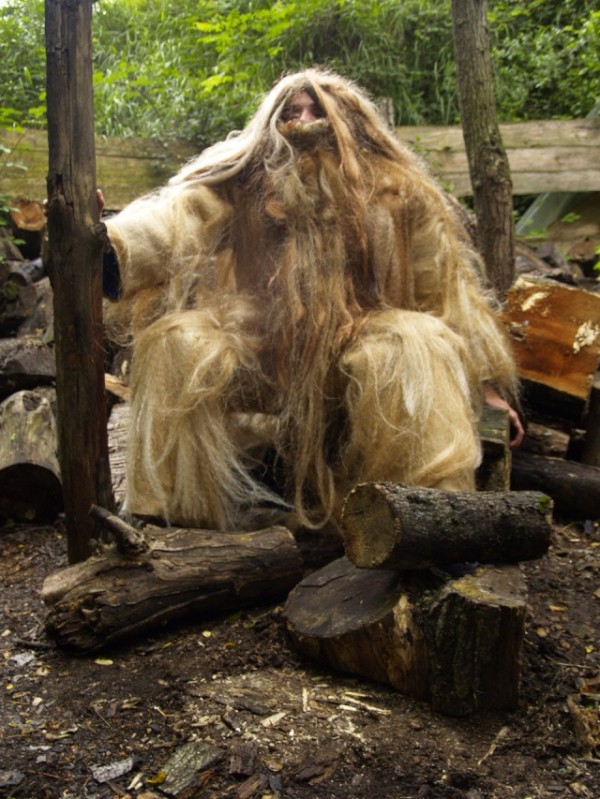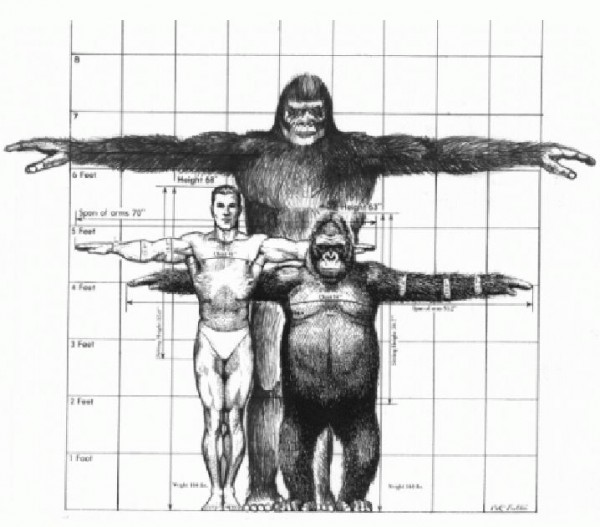20. Werewolf

Source
Werewolf is a mythological human with the ability to shapeshift into a wolf or an anthropomorphic wolf-like creature, either purposely, by being bitten or scratched by another werewolf, or after being placed under a curse. This transformation is often associated with the appearance of the full moon. Werewolves are often attributed super-human strength and senses, far beyond those of both wolves or men.
21. Fomorian

Source
In Irish mythology , were a semi-divine race who inhabited Ireland in ancient times. They may have once been believed to be the beings who preceded the gods, similar to the Greek Titans. It has been suggested that they represent the gods of chaos and wild nature, as opposed to the Tuatha Dé Danann who represent the gods of human civilization. They are sometimes said to have had the body of a man and the head of a goat, or to have had one eye, one arm and one leg, but some, for example Elatha, were very beautiful.
22. Blemmyes

The Blemmyes was a tribe which became fictionalized as a race of creatures believed to be acephalous (headless) monsters who had eyes and mouths on their chest. Ancient writers sometimes used the term anthropophagi to describe the Blemmyes.
23. Tikbalang
Source
Tikbalang is a creature of Philippine myth said to lurk in the mountains and forests of the Philippines. It is generally described as a tall, bony humanoid creature with disproportionately long limbs, to the point that its knees reach above its head when it squats down.It has the head and feet of an animal, most commonly a horse. It is sometimes believed to be a transformation of an aborted fetus which has been sent to earth from hell.  Tikbalangs are said to scare travelers and lead them astray such that they keep on returning to an arbitrary path no matter how far he goes or where he turns. Supposedly this is counteracted by wearing one’s shirt inside out.
Tikbalangs are said to scare travelers and lead them astray such that they keep on returning to an arbitrary path no matter how far he goes or where he turns. Supposedly this is counteracted by wearing one’s shirt inside out.


24. Encantado
Source
An encantado is a Brazilian legendary creature. They live in a deep underwater realm named the Encante. Encantados are most commonly viewed as a type of freshwater dolphin or sea snake that has the ability to shapeshift into human form. They are characterized by superior musical ability, seductiveness, and attraction to parties. The creature’s transformation into human form seems to be rare, and usually occurs at night. While in human form the encantado will wear a hat to hide its protruding forehead. It does not disappear while shapeshifting and frequently displays magical abilities, such as the power to control storms and haunt humans. They use various mind control techniques and can inflict illness. Many villagers will not go near the Amazon River at night because of this. Plenty of South Americans believe in the existence of the encantado and claim to have seen and interacted with the species.
25. Aswang
Source
Aswang is a mythical creature in Filipino folklore. The aswang is an inherently evil vampire-like creature and is the subject of a wide variety of myths and stories, the details of which vary greatly. Spanish colonizers noted that the Aswang was the most feared among the mythical creatures of the Philippines, even in the 16th century. “Aswangs” are often described as a combination of vampire and witch and are almost always female. They are sometimes used as a generic term applied to all types of witches, manananggals, shapeshifters, werewolves, and monsters. Aswang stories and definitions vary greatly from region to region and person to person, so no one particular set of characteristics can be ascribed to the term. However, the term is often used interchangeably with manananggal, which is a particular creature with a specific set of features. They are often portrayed as a monster with wings which flap loudly when she’s far away and quietly when she’s nearer.
26. Basajaun

Source
In Basque mythology, the basajaunak are a spirit dwelling in caves or in the woods who protects flocks of livestock and teaches skills such as agriculture and ironworking to humans. The basajaun also exists in Aragonese mythology in the valleys of Tena, Ansó, and Broto. Fifteenth-century carvings depicting the basajaunak can be seen in Burgos Cathedral and in the monastery of Santa María la Real in Nájera.
27. Rakshasa
Source
Rakshasha is a demon or unrighteous spirit in Hindu and Buddhist mythology . They are believed to be derived from foot of the Hindu God of Creation. Rakshasas are a populous race of supernatural humanoids. Powerful warriors, they resort to the use of magic and illusion when unsuccessful with conventional weapons. As shape-changers, they can assume various physical forms, and it is not always clear whether they have a true or natural form. Rakshasas are notorious for desecrating graves, harassing priests, possessing human beings, and so on. Their fingernails are venomous.
28. Wendigo
Source
Wendigo is a mythical creature appearing in the mythology of the Algonquian people. It is a malevolent cannibalistic spirit into which humans could transform, or which could possess humans. Wendigos were alien like embodiments of gluttony, greed, and excess; they were constantly searching for new victims. In some traditions, humans who became overpowered by greed could turn into Wendigos; the Wendigo myth thus served as a method of encouraging cooperation and moderation.
29. Incubus
Source
Incubus is a demon in male form supposed to lie upon sleepers, especially women, according to a number of mythological and legendary traditions. Victims may have been experiencing waking dreams or sleep paralysis. The influence of incubi could also have been invoked to escape punishment for actual crimes.
30. Sasquatch

Source
Sasquatch or better known as Bigfoot is usually described as a large, hairy, bipedal humanoid. The scientific community considers Bigfoot to be a combination of folklore, misidentification, and hoax, rather than a real creature. Alleged witnesses have described large eyes, a pronounced brow ridge, and a large, low-set forehead; the top of the head has been described as rounded and crested, similar to the sagittal crest of the male gorilla. Bigfoot is commonly reported to have a strong, unpleasant smell by those who claim to have encountered it. Proponents have also claimed that Bigfoot is omnivorous and mainly nocturnal.